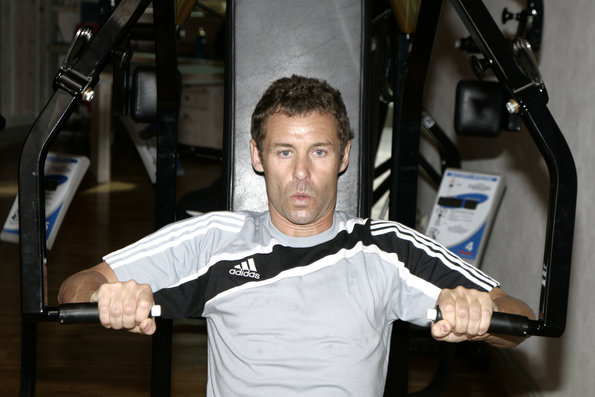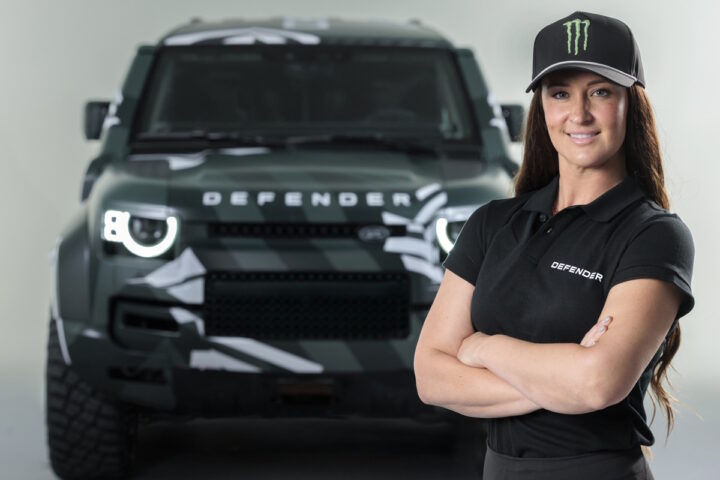In a weekly column, Le Mans record winner Tom Kristensen gives some exclusive insights behind the scenes of the world’s most famous endurance race and the preparation by Audi Sport Team Joest.
“During the 30-hour test at Le Castellet this week we had the opportunity of driving plenty of miles in the Audi R15 plus. So this is a good point in time to explain the cockpit of our diesel race sports car to you.
You can’t compare the cockpit of an LMP1 with a road car in any respect. Even a genuine sports car like the Audi R8 LMS offers a lot more comfort than the R15 plus does. It is a thoroughbred race car that is totally designed for speed and efficiency and has a very direct power-assisted steering ratio.
Nevertheless, Audi Sport keeps trying to make the work easier for us drivers and to give us the best possible ‘comfort’ under the circumstances.
Speaking of the steering wheel: the surface texture has been changed too so that the steering wheel’s grip is now even better than before. Only the controls we use most, like the gearshift, traction control (ASR) adjustment, brake balance adjustment, the high beam, and the radio button, are located on the steering wheel, which is packed with electronics. This helps us keep a good overview of these functions.
The two ASR buttons are very important. In the race, you always try to adjust the ASR to the conditions of the track and the tires – and these conditions constantly change during the race at Le Mans.
A display that can be freely programmed sits in a central position on the steering wheel. The mechanics and engineers use different screens than the drivers when starting up and checking the engine, for example. The most important information we need is the gear we’ve engaged, which is displayed particularly prominently, our lap time and the so-called delta time that lets us see in each sector whether we’re losing or gaining time to the respective fastest lap. The display has a day- and night-time mode.
In a modern race car, small lamps typically show you when you’ve reached the engine speed at which you need to shift gears. Green, yellow, and red LEDs light up one after the other. On red, we shift, which in the R15 is done by means of an electro-pneumatic system.
The steering wheel is cut at the bottom to make it easier for us to get in and out of the car. Just looking at pictures, you get no idea of how tight things are inside a cockpit and how difficult it is to pull our legs out from under the steering wheel when it’s time for a driver change.
The seating position in the R15 plus is comparable to that of a Formula 1 car. The nose of the vehicle points upward to ensure optimum airflow underneath the car. This means your feet are in a very high position. Your heels are just below the level of your heart. This also influences your blood circulation, but you get used to that.
The windshield, by the way, can be exchanged very quickly during a pit stop in case it’s gotten too dirty – yes, believe it or not, we actually look through it – or if it’s been damaged by stone chips or rubber from tire wear flying around the track.
Overall, the seating position in the R15 is very important. All three drivers have to sit similarly, even if their heights and builds differ. And of course, you’ve got to be firmly strapped in to really get a good feel for the car.
The starting function of the R15 plus is another interesting feature: when it’s turned off, the engine runs in regular mode. But when you push the button, the engine will run at a predefined rpm. That helps us move off quickly after a pit stop.
‘Cut’ is primarily used to reset the electronics. The ‘event’ button serves to flag a certain event, such as shifting event that didn’t go perfectly, in the data logging system. This makes it possible later on for the technicians to take an especially close look at the data logged at that particular point in time to locate a potential fault.
The pedals are just like those in a production vehicle: the gas pedal is on the right, the clutch on the left, and the brake pedal in the middle, but we only use the clutch to start off from rest. Also, like in any road-going Audi, there’s a footrest on the left which supports me while cornering.
In the DTM car, I used to primarily brake with my left foot, but in the R15 I usually brake with my right one – particularly in front of the chicanes at Le Mans. Only when braking for a very short time like in front of fast corners I use my left foot.
By the way, compared to a ‘normal’ race car, conditions in the cockpit of the R15 plus are unusually quiet which is very pleasant for us drivers.
You perceive the engine of the R15 plus in all rpm ranges. But when you lift in a long bend, you can actually hear the squealing of the tires – and that’s definitely unusual in a race car.
I’d really like to take you out on a lap in the R15 plus but there’s simply not enough room on the passenger’s side. But, from now on, when you see the pictures from our onboard cameras at Le Mans, you may have a better idea of the things that go on in our cockpit day and night.”
Tom Kristensen




















